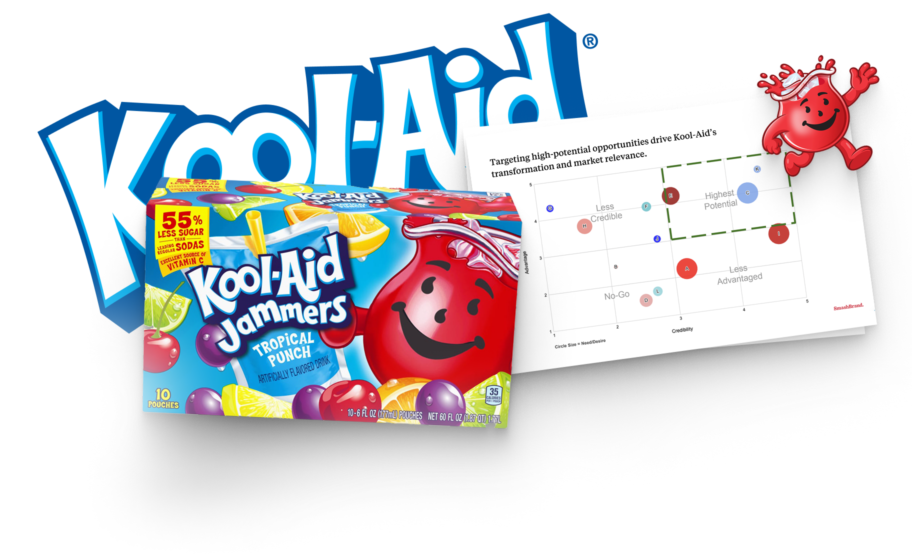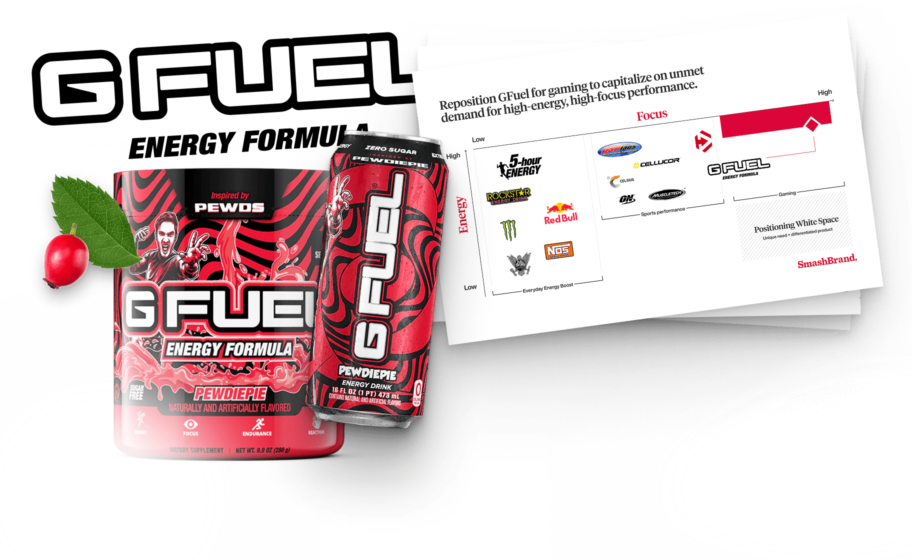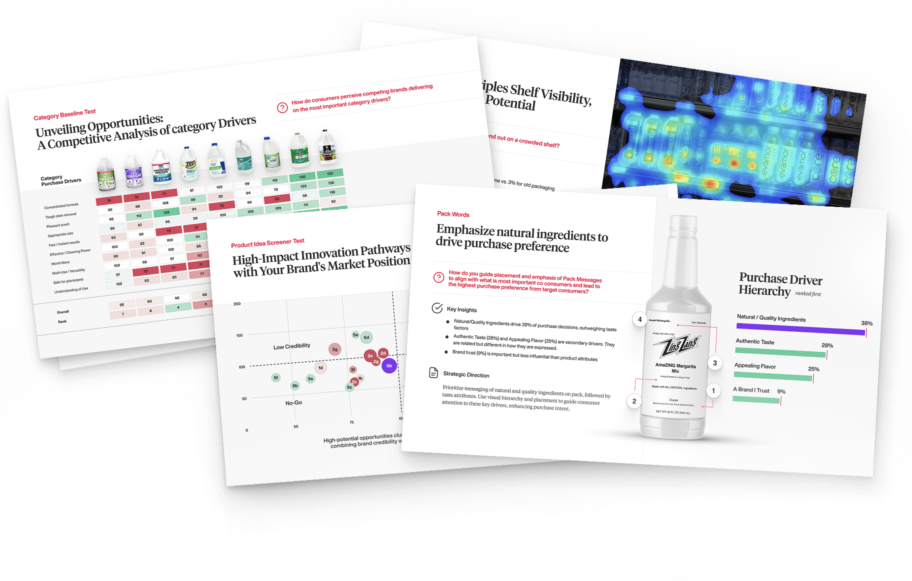For pet lovers, their furry friends are more than just pets; they consider them fully fledged family members. This means every dish of pet food carries the weight of trust for every pet owner and their companion’s well-being. To meet expectations, a unique pet brand must merge a clear brand identity with an intuitive logo design, transparent ingredient stories, and functional benefits when crafting its pet branding strategy.
The secret? Balancing rational cues (vet-approved formulas, easy-to-read labels) with emotional connection, crafting narratives that speak to pet parents’ desire for joy and security. In this article, you will uncover the secrets of the pet business, including how to craft an effective branding strategy. You will also learn about the critical purchase drivers for your pet product and common mistakes to avoid.
How do these changes impact brand design?
As the pet industry shifts toward treating companion animals as actual family members, the brand design must evolve differently depending on whether you’re an established player or a newcomer.
For existing brands.
- Layer warmer imagery and “better-for-you” badges onto your signature logo and color palette to evolve your personality without losing recognition.
- Lead with an explicit front-of-pack callout, shift detailed ingredient stories to secondary panels or QR links, and add easy-open and reseal features.
- Create a unified design lockup for supplements and treats so every SKU feels part of the same family across retail and digital channels.
For new brands.
- Choose a vivid archetype (e.g., Hero for performance), make your species and single-benefit claim unmistakable, and then layer in playful color or mascot accents to spark an emotional connection.
- Design resealable pouches or boxes with clear refill indicators and QR codes that drive auto-ship sign-ups, ensuring your pack works as hard online as it does on the shelf.
- Integrate intuitive ingredient badges and functional icons and mirror that clarity in your brand voice and digital storytelling.
A step-by-step pet branding roadmap.
Crafting a standout pet brand is a research-driven journey that unites deep consumer insights with creative strategy. By mapping the pet food market, auditing retail environments, and tapping into the voices of pet influencers and veterinarians, you can forge a strong brand identity, whether targeting dog owners, cat enthusiasts, or even guinea pig and other small animal lovers. This roadmap lays out how to transform rational facts about animal health into an emotional thread that weaves lasting brand loyalty.
Phase #1: Positioning.
Conduct in-depth immersion interviews with a cross-section of owners, puppy parents of specific breeds, busy cat guardians, and even families with guinea pigs who prize enriching pet toy solutions. These conversations reveal genuine needs surrounding pet health, feeding habits, and the moments that bring delight.
Next, execute competitive and retail audits. Walk store aisles and analyze how leading pet food brands and pet toy lines present themselves, note their brand personality, shelf placement, packaging claims, pricing tiers, and how they leverage third-party endorsements in the crowded pet food market.
Position your brand around a clear value proposition, whether that’s “clinically proven to support senior dog joints” or “vet-formulated, slow-cooked blends for felines with sensitive stomachs.” Anchor your brand voice to these personas: warm and playful for small-animal beginners or expert and reassuring for performance-driven dog sports enthusiasts.
Rank your top purchase drivers, efficacy, taste appeal, clean ingredients, convenience, and ethical sourcing based on category and persona. For example:
- Pet Health & Animal Health: Lead with proofs like “Veterinarian-formulated” or “Clinically proven gut support.”
- Better-For-You Ingredients: Highlight human-grade proteins, grain-free formulas, or probiotic blends.
- Emotional Hooks: Weave in the joy of that first mealtime wag or the relief of a calm night’s sleep.
Phase #2: Pack copy.
In the pet food market, your packaging is the first opportunity to win over dog lovers, animal lover households, and every parent of a furry friend. The copy you choose must stand out instantly: punchy headlines and bold benefit callouts cut through the clutter and spark “must-try” curiosity.
At the same time, it needs to carve out a distinct identity, signaling why your formula is different, whether it’s a commitment to animal welfare, nutrient-dense recipes co-developed with veterinarians, or artisanal sourcing that elevates you above commoditized options.
Every word must build trust, utilizing credible endorsements and clear, honest language to transform fleeting interest into lasting brand awareness. Nail this trifecta of standout appeal, clear differentiation, and unwavering credibility, and you’ll be on your way to becoming a household name, a strong brand that pet parents instinctively reach for again and again.
Phase #3: Creative development.
In the creative development phase, the goal is to bring your strategy to life through style exploration and concept sketches that truly resonate in the pet food market. Designers sketch out a range of visual directions, from vibrant, playful artwork that thrills dog lovers to more refined, minimalist treatments that appeal to the conscientious animal lover, all to delight the furry friend and their owner.
These initial explorations inform the creation of packaging prototypes that incorporate the high-impact elements defined in Phase 1: bold color contrasts, clear benefit callouts, and credibility badges, such as Vet Recommended from trusted veterinarians. As these mock-ups come together, you’ll gauge how quickly they drive brand awareness in the aisle and whether they feel worthy of becoming a household name.
Crucially, every panel is audited against your rational Head checklist, ensuring functional benefits and ingredient transparency shine through while also meeting your emotional “Heart” checklist by celebrating the joy of the pet-parent bond and underscoring commitments to animal welfare. This iterative process ensures you emerge with a cohesive design system that supports a strong brand and stands out in a crowded category.
Phase #4: Validation and optimization.
In Phase 3, you move from promising prototypes to proven winners by leaning heavily on consumer feedback and real-world simulations. First, consumer concept diagnostics measure how well each design grabs attention and differentiates your brand in a crowded aisle, pinpointing which visuals and messages truly stand out.
With those refinements in hand, purchase intent simulations place your revised packaging head-to-head against real competitors to forecast likely trial lift and share gains. Finally, you synthesize all insights into final refinements, tweaking the hierarchy, copy, or structural details as needed, and then sequence your rollout planning to ensure a smooth production ramp and a coordinated launch across channels.
Innovation for expanding market share.
Innovation in pet branding follows a disciplined, insight-driven process that turns fresh ideas into market-winning products. When executed effectively, it can materially grow market share. Here’s how it works:
Spotting white-space opportunities.
- Continuously monitor emerging human-food parallels (e.g., “biohacking” supplements, fresh and frozen meals) and new channels (live shopping, AR experiences).
- Leverage immersion interviews with diverse pet owners, social listening around pet influencers, and quantitative surveys to uncover unmet needs.
Ideation & concept development.
- Bring together strategists, creative designers, veterinarians, and even production engineers to brainstorm positioning, packaging formats, and brand voice.
- Sketch multiple pack concepts, tagline options, and structural innovations (e.g., single-serve pouches, peek-through windows, easy-open tear notches) to visualize how an idea will land on the shelf.
Validation & refinement.
- Test prototypes in simulated retail environments to measure shelf attention, clarity, and perceived distinction against incumbents.
- Optimize on-pack claims for believability and priority (e.g., “Vet-Formulated Calming Chews” vs. “Supports Emotional Balance”) and run PI simulations; brands that achieve even a 5-point lift in PI often see double-digit share gains post-launch.
- Refine design, copy, and structure based on data, tightening message hierarchy, enhancing visual “pop,” and ensuring all regulatory essentials fit without clutter.
Developing Your Channel Strategy
An effective branding effort doesn’t end at a great logo or standout packaging; it thrives on a well-orchestrated mix of channels that reach every dog lover, animal lover, and guardian of a furry friend without draining your budget or burning out your partners.
Map your core channels.
- DTC sites and subscriptions: Highest ROI for new pet food launches and specialty treats, let you test products and gather first-party data with minimal up-front shelf costs.
- Brick-and-Mortar Retail: Leverage both mass-market grocers and boutique pet stores. Start with targeted rollouts in key territories to prove velocity before expanding regionally.
- Veterinary Clinics & Animal Welfare Partners: Co-branded point-of-care materials enhance credibility in pet and animal health; focus investment on clinics that align with your mission.
- Social Media & Pet Influencers: Prioritize micro-influencers whose audiences overlap with your target persona (e.g., breed-specific communities or small-animal enthusiasts, such as those interested in guinea pigs).
- Experiential Events: Pop-up pet cafés, adoption fairs, and demo days give tactile brand experiences without the high cost of permanent real estate.
Go omnichannel without overstretching.
- Hub-and-Spoke Model: Focus your resources on one or two high-impact channels (e.g., DTC and a signature pet expo) and leverage learnings from these channels to inform secondary channels. It prevents financial dilution across ten platforms with marginal returns.
- Phased Rollout: Validate your core market before scaling. Utilize pilot programs, such as limited-edition pet toy bundles, on your website, and then expand the winning bundles into retail.
- Cross-Channel Synergy: Embed QR codes on the packaging that drive retail shoppers to subscribe online; use influencer unboxings to fuel in-store demos; repurpose UGC in paid ads.
Leveraging brand assets for attention and memorability.
Strong pet brands deploy a tight set of assets: logo & color, mascot, typography & layout, tagline & voice, packaging, and imagery to capture attention and stick in mind across digital and physical touchpoints:
- Logo & Color: Your signature mark and hue unify ads, social posts, and shelves, fast-tracking recognition in the pet food market.
- Mascot/Character: A fun pup or critter icon brings your brand personality to life in emails, videos, and in-store displays.
- Typography & Layout: Clear hierarchies and uncluttered design deliver key messages, such as “Vet-formulated for pet health,” at a glance.
- Tagline & Brand Voice: A memorable slogan and consistent, empathetic tone make every blog, post, and PR pitch unmistakably yours.
- Packaging: Distinctive pack shapes, sample pouches, or pet toy tie-ins spark unboxing moments and social shares.
- Imagery: Lifestyle shots of happy dogs or contented cats convey care, joy, and a special bond with your furry friend.
When used consistently across marketing campaigns, PR, influencer partnerships, and retail activations, these elements build brand awareness, drive memorability, and cement loyalty.
What drives purchase intent in pet branding?
Below is a breakdown of the eight core drivers and how they translate into packaging and brand decisions:
| Purchase Driver | Role in Purchase Intent | Implications for Branding & Packaging |
| Efficacy & Performance | Consumers need proof that the product works (e.g., joint support, digestive relief). | Highlight clinical claims, Vet-formulated badges, and performance icons. |
| Taste & Flavor Appeal | Owners want pets to enjoy the product and visually appealing images drive trial. | Use appetizing photography or illustrations that prominently feature flavors. |
| Health & Better-For-Pet Attributes | Aligns with the demand for gut health, immunity, calming, and holistic pet health. | Lead with Probiotic blend, Grain-free, or other functional benefits on the front. |
| Ingredient Quality & Transparency | Shoppers scrutinize labels like a grocery cart, seeking clean, human-grade ingredients. | Show a simple ingredient panel snippet; use 100% Single-Source Protein callouts. |
| Brand Trust & Credibility | Third-party seals and endorsements reduce skepticism and build brand loyalty. | Feature Vet Recommended, NGO logos, or sustainability certifications. |
| Visual Appeal & Packaging Clarity | Standout designs and a clear hierarchy aid quick decisions in a crowded aisle. | Employ bold color blocks, uncluttered layouts, and clear species cues |
| Convenience & Ease-of-Use | Busy pet parents value resealability, portion guidance, and quick prep. | Integrate zip-locks, prep icons, and “Easy-serve” callouts on-pack. |
| Value & Price Perception | A perceived premium or fair price must match the quality signals to justify the expenditure. | Use tactile finishes (such as soft-touch or emboss) and merit-based taglines. |
Packaging elements that boost sales.
An innovative product branding strategy, combined with adherence to the fundamentals of branding, ensures that your packaging persuades the target audience. Here’s how to turn every pack into a high-performing sales driver:
Crystal-clear benefit callouts.
- Front-of-Pack Hierarchy: Lead with the most persuasive claim in the top third of the pack so busy owners don’t have to hunt for your promise.
- Outcome-Focused Language: Replace feature-heavy copy with benefit-driven phrases (e.g., Peaceful Nights, Happy Tails) that resonate emotionally.
- Regulatory Compliance: Seamlessly embed mandatory details in secondary panels to keep your FOP uncluttered and persuasive.
Memorable brand assets.
- Mascots & Icons: Introduce a lovable character (e.g., a playful pup or curious kitten) that becomes the face of your naming and branding efforts across touchpoints.
- Unique Patterns & Shapes: Develop a graphic motif or silhouette that consumers instantly associate with your brand, boosting recall without additional ad spend.
- Tagline Lock-Up: Fuse your tagline with the logo to reinforce position; every product becomes a mini “ad” for your brand.
Premium look & feel.
- Tactile Finishes: Employ soft-touch laminates, embossing, and spot UV to convey luxury and justify a higher price point.
- Ingredient Badges: Elevate Human-Grade or 100% Single-Source Protein callouts with distinct icons that stand out on the pack.
- Matte vs. Gloss Play: Contrast finishes to draw attention to key areas and premium cues that feel as good as they look.
Convenience features.
- Easy-Open & Reseal: Integrate tear-notches and zip-lock seals for quick, mess-free serving, essential for time-pressed pet parents.
- Prep Icons: Use step-by-step graphics (e.g., “1. Pour 2. Splash 3. Serve”) to eliminate doubts and reduce shelf hesitation.
- Portion Control: Consider single-serve sachets or tear-away packs that simplify dosing and drive incremental sales.
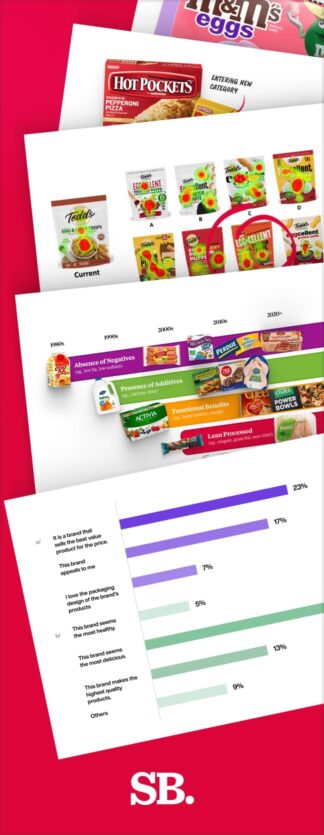
Nice Package
Don’t miss out on our monthly newsletter Nice Package!
Each month, we deliver a data-driven newsletter directly to your inbox, unpacking a critical topic in the FMCG & CPG industry.
Subscribe to
Nice Package.
A monthly newsletter that unpacks a critical topic in the FMCG & CPG industry.
Free Resource.
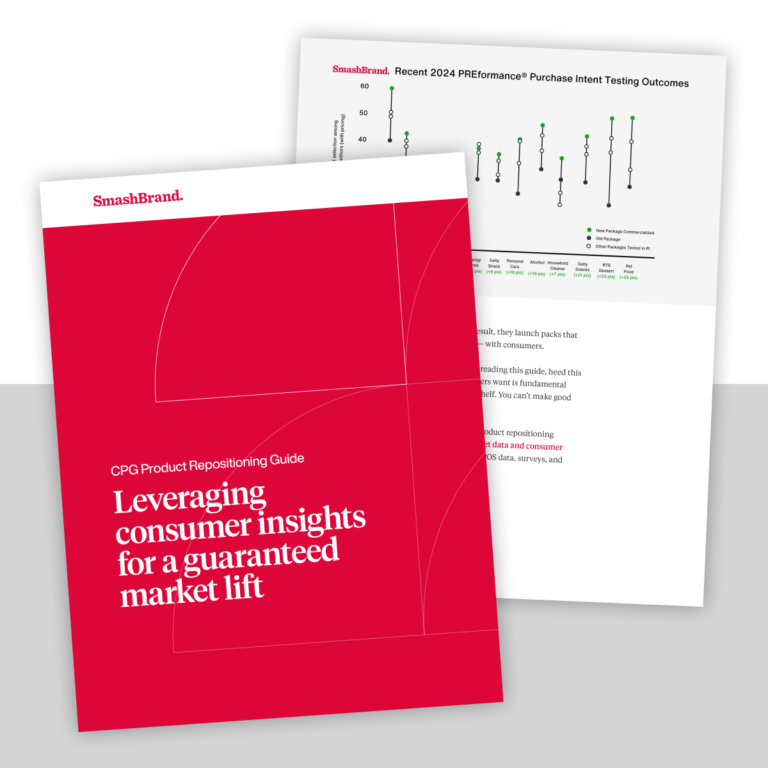
CPG product repositioning guide.
Explore the five undeniable signs your CPG product needs repositioning along with strategies for leveraging consumer insights for a guaranteed market lift.
Learn More About CPG product repositioning guide.

